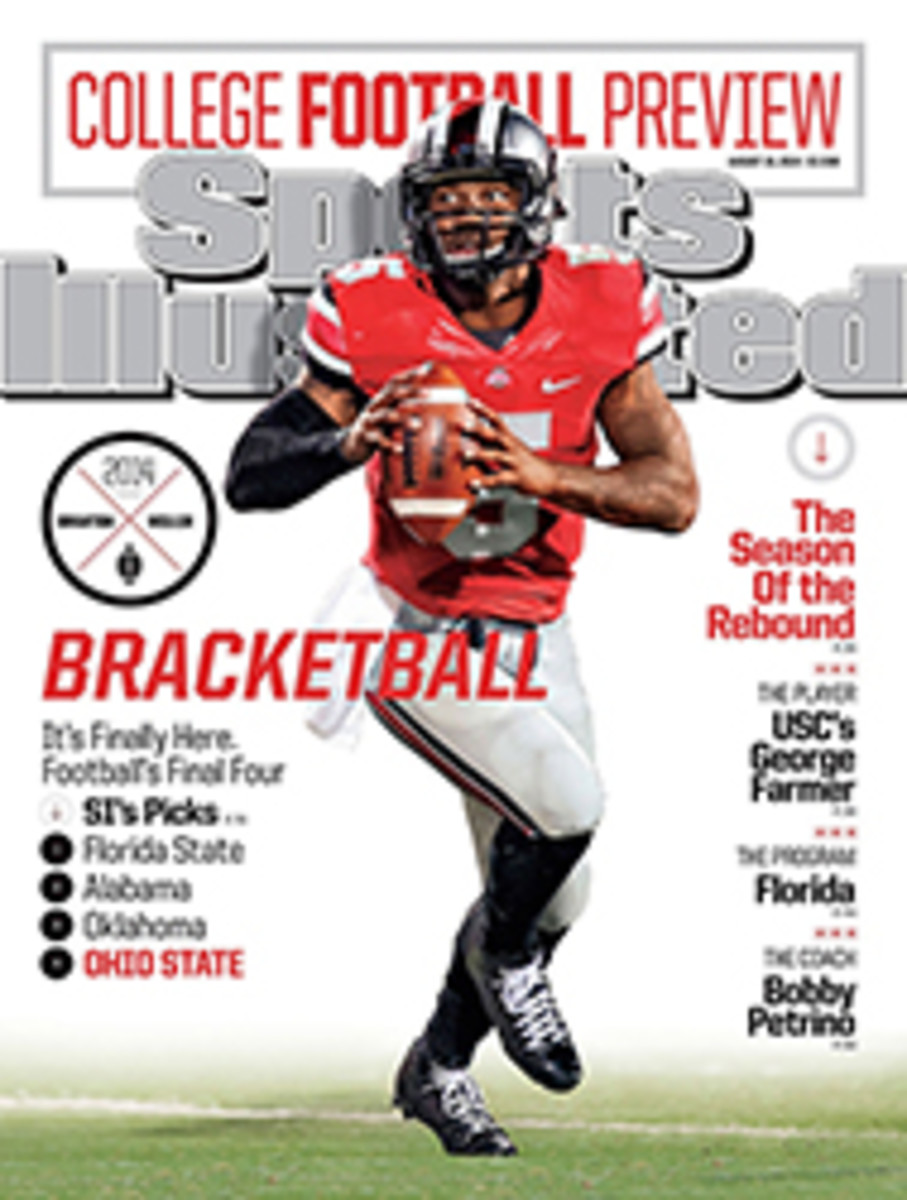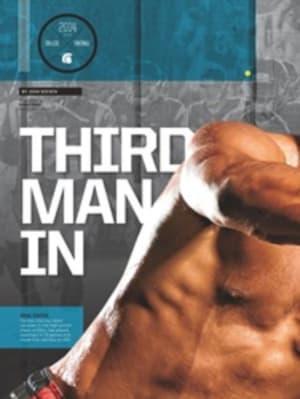
9. STANFORD
HOLDING THE LINE
Oversized photos of Stanford's offensive and defensive lines greet the Cardinal at their new locker room entrance. The not-so-subtle message: Stanford's four-game BCS bowl streak—and the coinciding facility upgrade—are due to trench domination.
While Stanford isn't turning pass-happy, the Cardinal will adapt as they work in four new O-line starters. The one returner is junior left tackle Andrus Peat (6'7", 316 pounds), a future NFL cornerstone. The four other assumed starters—guard Joshua Garnett (6'5", 325), center Graham Shuler (6'4", 287), guard Johnny Caspers (6'4", 297) and tackle Kyle Murphy (6'7", 298)—arrived with Peat as part of a 2012 recruiting haul of linemen considered one of the best ever. The new Cardinal starters aren't green: All have played in extra linemen packages. Operating behind them, third-year starting quarterback Kevin Hogan (20 TDs and 10 INTs in '13) will throw to All-America return man Ty Montgomery (10 TD catches) and field stretcher Devon Cajuste (22.9 yards per reception).
Stanford will stay true on defense, where senior end Henry Anderson (6'6", 287) anchors an experienced line. But the stars are in the secondary; senior strong safety Jordan Richards and junior cornerback Alex Carter project as NFL players. Another sign that Stanford is evolving, while sticking to its roots.
X-FACTOR
Four backs are competing to replace Tyler Gaffney and the question is whether heralded junior Barry J. Sanders can showcase his genetic gifts. His explosiveness stands out, and he'll be used on everything from punt returns to screens. Some of his best runs are improvs that start with hits behind the line—just like his Hall of Fame dad. "There's stuff that he sees and feels that other people don't," Stanford OC Mike Bloomgren says. "That probably started when sperm met egg."
SCHEDULE ANALYSIS
It's a bad season to be a Stanford season-ticket holder, with the only marquee home game against USC in Week 2. The road schedule—at Washington, at Notre Dame, at Arizona State, at Oregon, at Cal and at UCLA —could be the most difficult in the country for a power-league school. No game looms larger than the Nov. 1 trip to Eugene if the Cardinal wants to repeat as Pac-12 champion.
SI POWER RANKINGS / By Rotowire.com
[The following text appears within a chart. Please see hardcopy or PDF for actual chart.]
OFFENSE 87%
DEFENSE 89%
SPECIAL TEAMS 89%
OPPOSING COACH'S TAKE
In the past, Stanford had good possession receivers but no home run threats. Not anymore. Ty Montgomery can go all the way on any play—and fellow senior Devon Cajuste is even faster than him. The deep threats present opponents with the classic football conflict between supporting the run with the secondary or staying back. Their offensive line is always going to be their strength. Last year they were down in numbers at tight end, so they just converted an offensive linemen and exacerbated the problems opponents have facing their line. Their tailbacks always run north-south, as they really are a good downhill team. Kevin Hogan is a good game manager who can throw it well, but they don't rely on him to make a play, like a spread offense quarterback. They've become a tough team to prepare for because all season long you are usually dealing with the spread. Back in the day, you used to be ready to play the two-back (pro-style) run game. But now it's the opposite.
PHOTO
JED JACOBSOHN FOR SPORTS ILLUSTRATED (HOGAN)
KEVIN HOGAN
PHOTO
STEVEN BISIG/USA TODAY SPORTS (SANDERS)
TWO ILLUSTRATIONS
CHART

